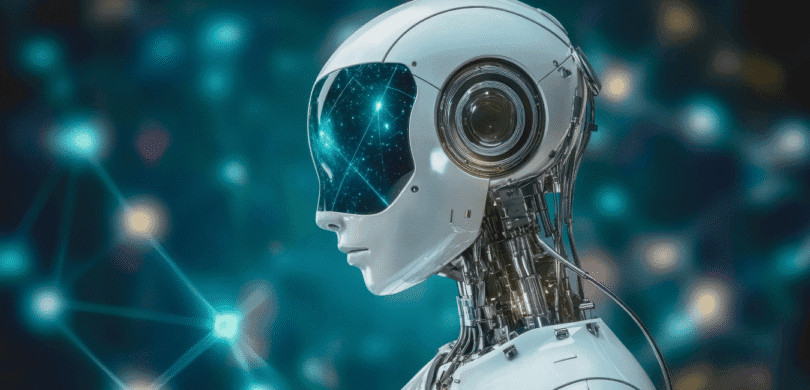Markets have never moved faster. Prices rise and fall within milliseconds, headlines move currencies before the ink dries, and retail traders now compete with algorithms that never sleep. Artificial intelligence is changing how people read, react, and predict risk, and it’s rewriting the entire rhythm of modern trading.
AI doesn’t just process data faster. It finds meaning where humans can’t look long enough to see it. From portfolio management to behavioral forecasting, its reach extends far beyond automated trades. For traders who used to rely on instinct and charts, that shift brings both opportunity and unease.
Pattern Recognition and Real-Time Decision Making
AI thrives on patterns. It learns how markets breathe, how a currency pair behaves before a rate decision, or how a stock reacts when a certain sector trend breaks. That precision allows traders to spot signals earlier, sometimes even before the crowd senses momentum shifting.
Modern systems no longer stop at numbers. They scan news sentiment, Twitter feeds, and even satellite imagery of shipping ports to gauge economic movement. When machine learning connects those dots, it creates a level of predictive insight that no manual chart analysis can match.
This approach isn’t limited to finance. Even the entertainment industries are embracing data-driven foresight. VPN casino, which relies on dynamic risk management for both compliance and security, uses similar AI tools to detect irregular patterns in gameplay and transactions. The logic is the same: track behavior early, act before damage spreads. For traders, that same kind of early detection can be the difference between a smart hedge and a costly misstep.
Sentiment Analysis: Reading Between the Lines
Once upon a time, traders read the market through newspaper columns and gut instinct. Today, AI reads the crowd. Natural language processing (NLP) engines sift through millions of posts, headlines, and analyst notes to gauge emotion in real time. When fear spikes, systems notice. When confidence builds quietly, they catch that too.
This technology has changed the tempo of trading. Short-term players can now react to subtle mood shifts instead of waiting for price action to confirm them. It’s an advantage, but also a responsibility, because emotional data moves quickly and can mislead if not interpreted in context.
The smartest traders pair sentiment tools with their own judgment. They know algorithms see patterns, but not purpose. A sarcastic post can trigger the wrong signal, and a trending keyword doesn’t always mean a real shift in sentiment. AI provides the vision; human reasoning still adds the sanity check.
Risk Mapping and Scenario Testing
One of AI’s strongest advantages is its ability to simulate, instead of running a few “what if” scenarios, systems now process thousands at once. Traders can model how their portfolio might behave if the dollar strengthens, oil prices dip, or a political shock hits a specific region.
The result isn’t a perfect prediction, but a probability map, a living model that shifts with new data. For hedge funds, this means faster response times. For retail traders, it means access to risk analysis once reserved for institutional desks.
Some advanced AI dashboards now highlight “stress points” in real time. If exposure to a sector grows beyond tolerance, a warning pops up. That kind of active guidance turns risk management from a quarterly review into a constant conversation.
Automation with a Human Pulse
Fully automated trading systems still scare traditional investors, and for good reason. Too much automation can magnify small errors. That’s why the latest generation of AI tools focuses on collaboration rather than replacement.
Smart assistants now help traders structure positions, calculate position sizing, and manage exits. They give alerts, not orders. Humans remain in charge, but with better awareness. This blend keeps emotional control intact while reducing fatigue, one of the biggest hidden risks in trading.
For example, some day traders use AI-driven journaling tools that track decisions and flag impulsive trades. Over time, the system learns your behavioral weaknesses, overconfidence after a win, hesitation after a loss, and nudges you back toward balance. It’s quiet coaching, coded into software.
Data Privacy and Ethical Challenges
Every new advantage brings new vulnerabilities. AI tools depend on enormous datasets, often drawn from social platforms and trading apps. That means sensitive information travels farther than before, raising concerns about security and transparency.
To address this, financial firms are adopting stricter encryption protocols and zero-trust network frameworks, the same security principles used in regulated digital spaces like online casinos. The goal is to ensure that prediction doesn’t come at the cost of privacy.
Data integrity has become just as critical as performance. Traders now ask where their algorithms source data, who audits the models, and how biases are handled. The market no longer rewards speed alone; it rewards trust.
The Road Ahead
AI won’t erase human traders, but it will change what “human skill” means. Intuition alone no longer wins. The traders who adapt fastest will be those who let AI handle the noise while they focus on judgment, reading between the signals, seeing what the code can’t.
In the end, the edge isn’t having the smartest algorithm. It’s knowing when to believe it.

